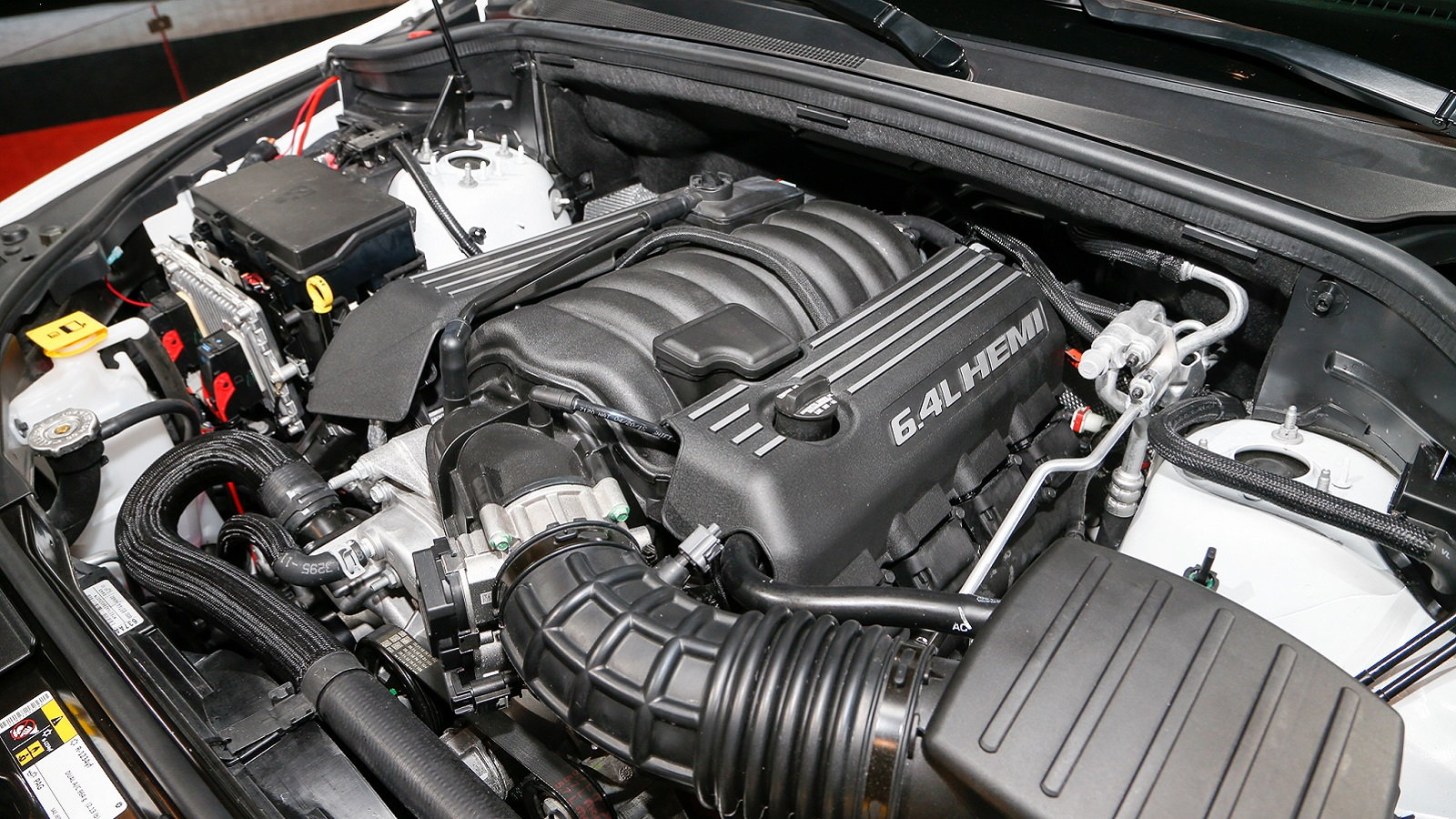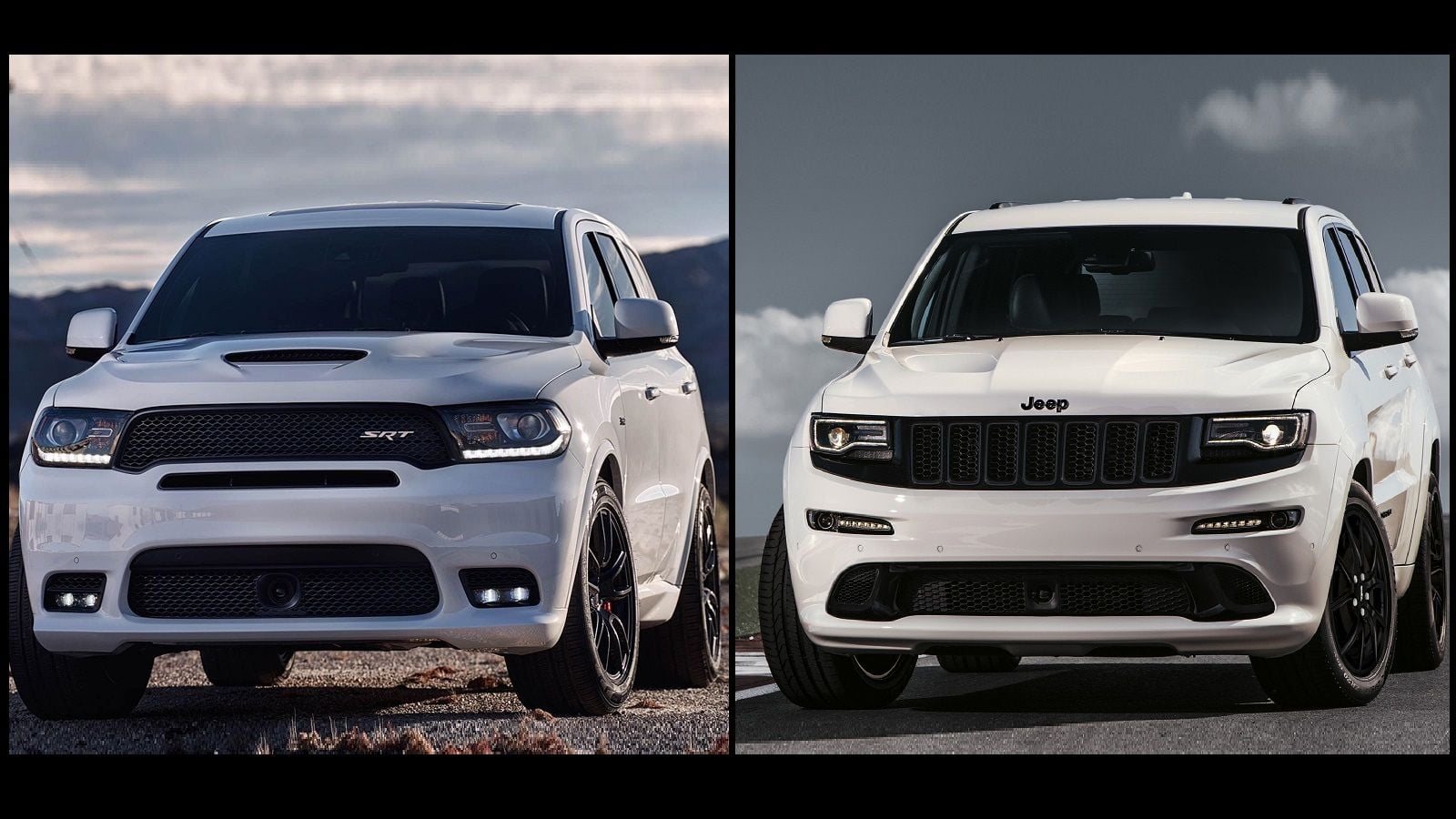Cage Match: Durango SRT vs Grand Cherokee SRT!
If you are shopping for a potent high-performance SUV, chances are you have run across the Dodge Durango SRT and the Jeep Grand Cherokee SRT. The spec sheets and performance numbers of both of these savage SUV's are nearly identical to one another, so which one has the edge over the other?










Power Aplenty
If you are shopping for any type of vehicle in Chrysler's "SRT" range, horsepower is clearly one of your main concerns. In this performance category, both the Dodge Durango SRT and Jeep Grand Cherokee SRT are equally matched. Both vehicles are fitted with the renowned 392 cubic-inch Hemi V8 as found in a number of other performance vehicles in Chrysler's lineup. The 392 Hemi is good for 475 horsepower and 470 lb-feet of torque, and is coupled to a ZF 8-speed automatic transmission in both models. While top speed numbers have not been officially published for the Durango, we expect it to be somewhere in line with the Cherokee at 160 mph, which is more than enough to grant you a free trip to the slammer.
Performance Time Slips
While both of these brutes are making some serious power, most sources claim the Durango has a slight edge at the drag strip. Dodge claims the Durango SRT is capable of 4.4-second 0-60 mph runs with an overall quarter-mile time dipping into the 12's (12.9 seconds). Comparatively, the Jeep Grand Cherokee SRT can make 0-60 mph sprints in 4.7 seconds and will trip the quarter-mile lights only a few tenths slower at 13.1 seconds. In real-world situations, these numbers are likely a wash, but the 5-inch longer wheelbase of the Durango (119.9" vs 114.8") contributes to a better launch off of the line even though its curb weight is 70-100 lbs heavier than the Jeep depending on the vehicle configuration.
Aggressive Styling
If you are going to have a hot-rod SUV that is blisteringly fast, it also has to look fast, right? Both cars definitely look the part when it comes to their exterior styling. The Dodge has an oversized grille opening, a large hood scoop with dual vents, dual exhaust outlets, sharper kick panels, and 20-inch wheels covering the beefy 15" front and 13.8" rear brake rotors with Brembo calipers. The Jeep features a blacked-out grille and headlights, an aggressive front fascia, raised hood with heat extracting vents, and equally large 20-inch wheels over equally meaty Brembo brakes. With aggressive body accents throughout the exterior of both cars, neither will be mistaken for their base model brethren.
Two or Three Rows?
Perhaps the biggest differences between the two vehicles are found in the interior. The Durango SRT is the only hot-rod SUV in its class, besides the Mercedes AMG-GLS63, to have third-row seating. The Durango can seat 6 individuals who each get their own bucket seat with heavy bolstering and Alcantara center sections to prevent sliding in the seat under heavy cornering. In contrast, the Jeep has two-row seating that accommodates 5 people. The rear seats are a more traditional 60/40 split as found in most two-row SUV's, but are available in a variety of coverings featuring Laguna leather and perforated suede inserts. Due to the extra seating and roomy layout of the Dodge, cargo space is limited to 17 cubic-feet whereas the Jeep has more than double the space at 36 cubic feet. That said, the Dodge has almost 30 cubic feet more passenger volume than the slightly more compact Jeep.
As Equal As They Come
Chances are that either of these SRT SUV's will be used as year-around drivers that will do everything from grabbing the groceries to picking up the kids from school and even towing the trailer during weekend camping trips. Both vehicles provide multiple driving modes such as Sport, Track, Tow, Auto, Snow, and Custom that adjusts the suspension, engine mapping, and all-wheel drive torque distribution. However, the Dodge adds two new modes of Eco and Valet. Both vehicles have towing capacities of 8,700 lbs and achieve identical 13/19 combined mpg ratings. They both feature an 8.4" infotainment system with all the goodies including launch control to rocket off of the line. The Durango SRT's base MSRP of $64,090 slips in a few thousand cheaper than the Grand Cherokee SRT's starting price of $66,895, but as we all know, these numbers can be thrown out the window when optioning a vehicle to your liking. Overall, these performance SUV's come as equally matched as anything we have seen and choosing one typically boils down to personal preference, but with the release of the 707 horsepower Jeep Grand Cherokee Trackhawk on the horizon, there are sure to be a number of buyers who will hold out for the new top-dog performance SUV that will soon hit showroom floors.
